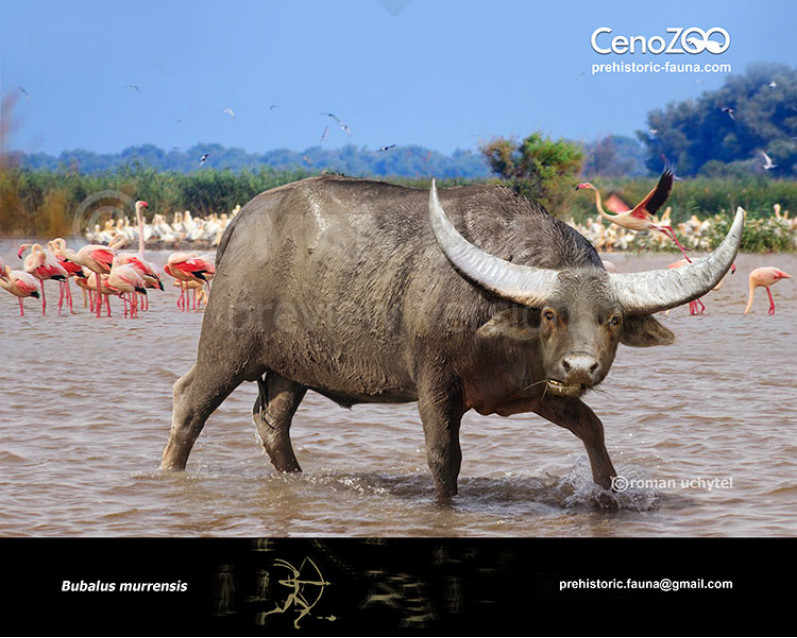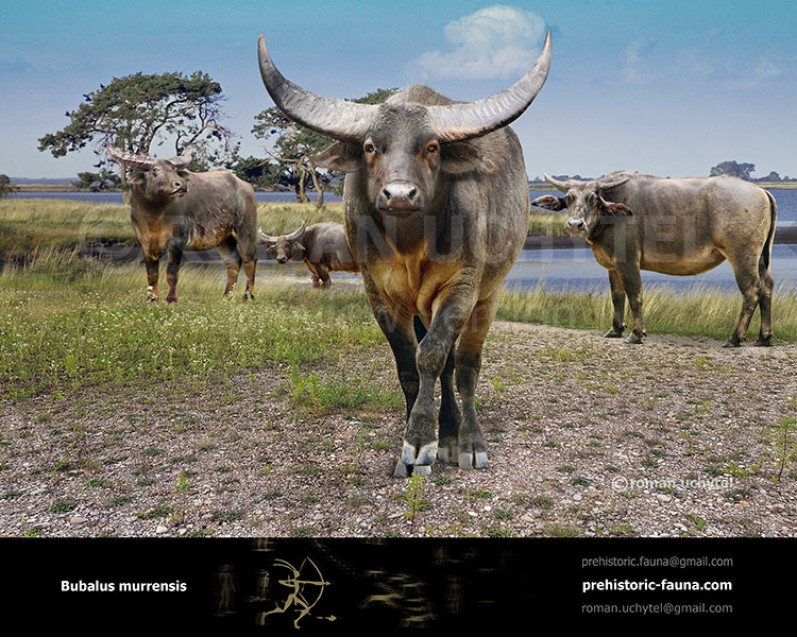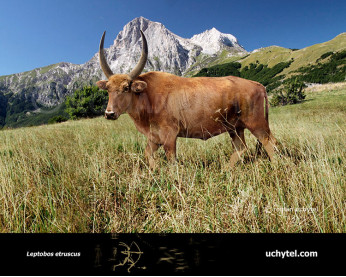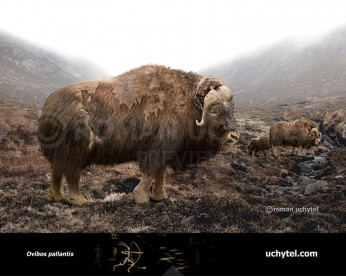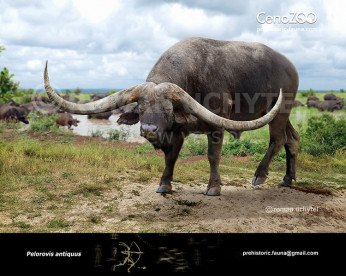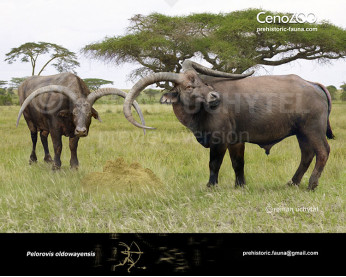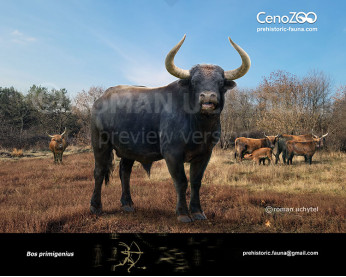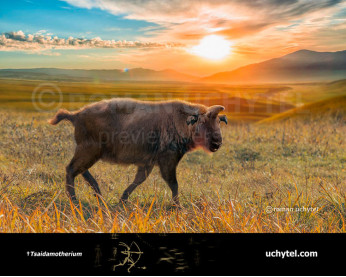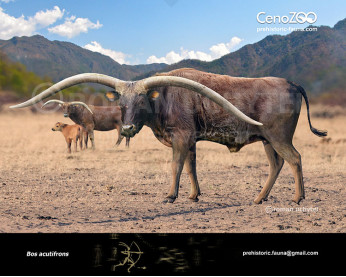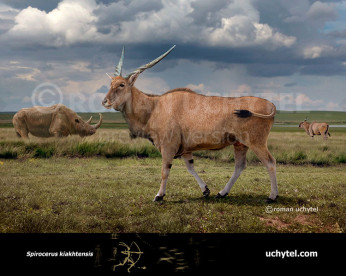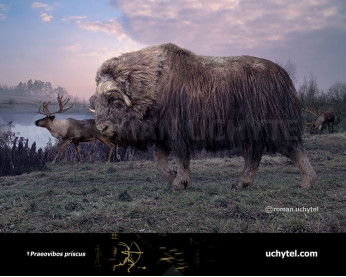European water buffalo
455455
European water buffalo (†Bubalus murrensis (Berckhemer 1927))
Order: Artiodactyla
Family: Bovidae
Subfamily: Bovinae
Temporal range: during the Pleistocene (Europe)
Dimensions: length - 2,5 - 2,8 m, height - 160 - 185 сm, weight - 500 - 1100 kg
Bubalus murrensis, the European water buffalo, is an extinct bovine that lived in Europe during the Pleistocene. Its closest living relatives are the wild water buffalo (Bubalus arnee), the tamaraw (Bubalus mindorensis), the lowland anoa (Bubalus depressicornis), the mountain anoa (Bubalus quarlesi) and the domestic water buffalo (Bubalus bubalis).
The morphology of Bubalus murrensis is very similar to other Bubalus species like the Wild Asian water buffalo (Bubalus arnee). Only the skull differs from other bovines, especially the triangular horns. A skull found in Rhineland-Palatinate (Germany) had a width of 107 cm.
The European water buffalo occurred in river valleys. Remains are very rare. The majority of finds have come from along the Rhine, Elbe and Murr in Germany and the Netherlands. Isolated specimens have also been found between the Atlantic coast of France in the west and Romania in the east]. It lived in muddy and swampy terrain. Bubalus murrensis could not tolerate long-lasting episodes of frost and was therefore absent in Central Europe during the Glacial Periods. During the Interglacial Periods like the Eemian it occurred together with other species of the Interglacial faunal assemblage, including the straight-tusked elephant (Palaeoloxodon namadicus), Merck's rhinoceros (Stephanorinus kirchbergensis), fallow deer (Dama dama), aurochs (Bos primigenius) and the European hippopotamus (Hippopotamus antiquus).
Payment
You may use multiple payment methods to buy image such as credit cards, PayPal and bank transfer.
European water buffalo (†Bubalus murrensis (Berckhemer 1927))
Order: Artiodactyla
Family: Bovidae
Subfamily: Bovinae
Temporal range: during the Pleistocene (Europe)
Dimensions: length - 2,5 - 2,8 m, height - 160 - 185 сm, weight - 500 - 1100 kg
Bubalus murrensis, the European water buffalo, is an extinct bovine that lived in Europe during the Pleistocene. Its closest living relatives are the wild water buffalo (Bubalus arnee), the tamaraw (Bubalus mindorensis), the lowland anoa (Bubalus depressicornis), the mountain anoa (Bubalus quarlesi) and the domestic water buffalo (Bubalus bubalis).
The morphology of Bubalus murrensis is very similar to other Bubalus species like the Wild Asian water buffalo (Bubalus arnee). Only the skull differs from other bovines, especially the triangular horns. A skull found in Rhineland-Palatinate (Germany) had a width of 107 cm.
The European water buffalo occurred in river valleys. Remains are very rare. The majority of finds have come from along the Rhine, Elbe and Murr in Germany and the Netherlands. Isolated specimens have also been found between the Atlantic coast of France in the west and Romania in the east]. It lived in muddy and swampy terrain. Bubalus murrensis could not tolerate long-lasting episodes of frost and was therefore absent in Central Europe during the Glacial Periods. During the Interglacial Periods like the Eemian it occurred together with other species of the Interglacial faunal assemblage, including the straight-tusked elephant (Palaeoloxodon namadicus), Merck's rhinoceros (Stephanorinus kirchbergensis), fallow deer (Dama dama), aurochs (Bos primigenius) and the European hippopotamus (Hippopotamus antiquus).

